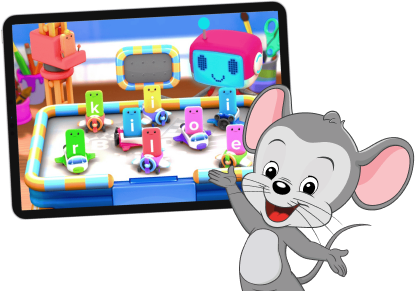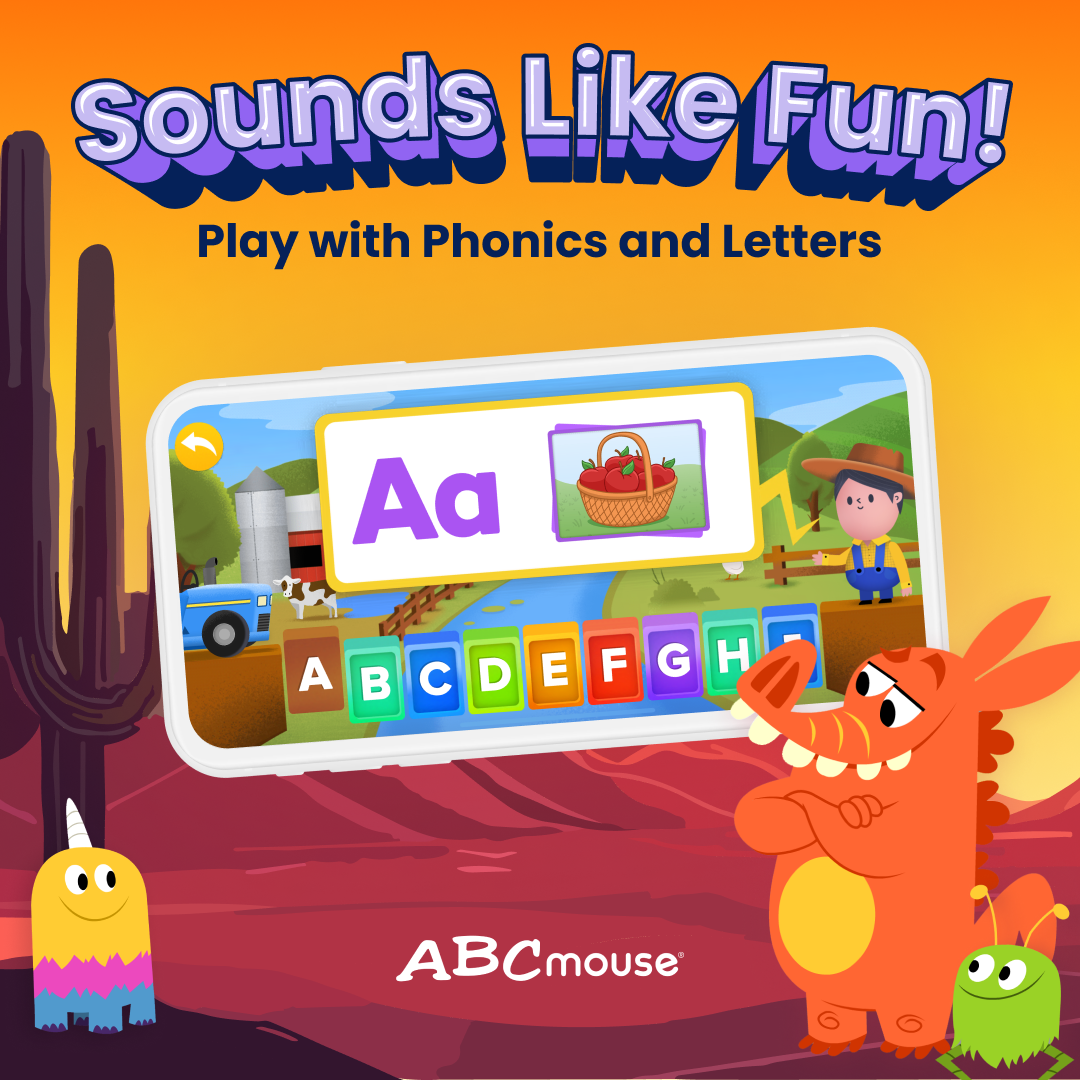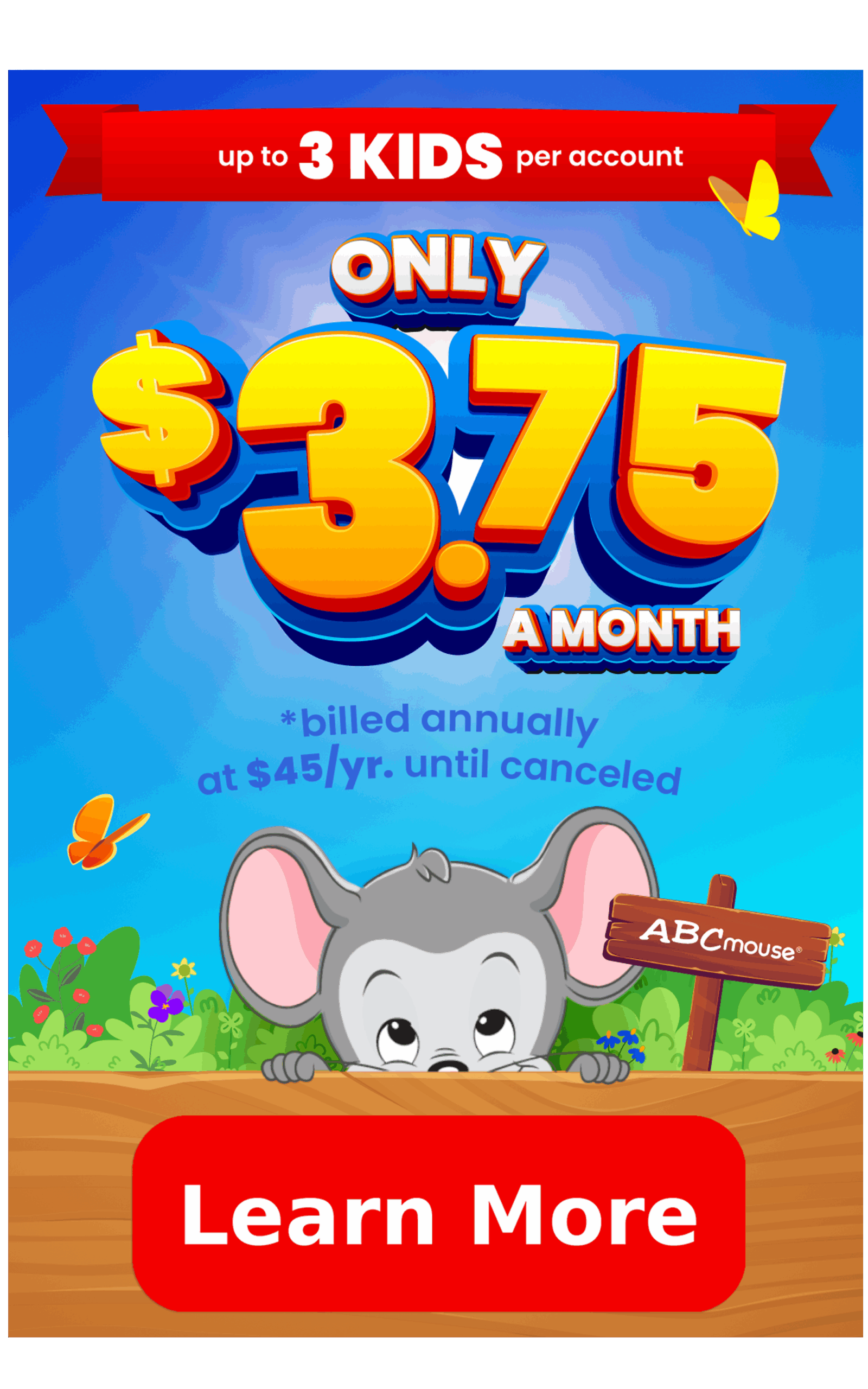
Pre-K Sight Word List
If your young learner seems ready to explore high-frequency words, these sight words for preschool can help them get started.
What Are Sight Words?
As toddlers become proficient in recognizing basic letters and letter sounds, some may show readiness for learning to recognize short, frequently-used words, which are known as sight words.
Sight words, also known as high-frequency words, are commonly-used words that children often see in books and are encouraged to recognize and read by sight after learning the letters and letter sounds in the word.
Just as with all learning, children can show readiness to learn high-frequency words at different times. If your preschooler shows interest in learning some of the words around them, this article on sight words for pre-K is a good place to begin.
The ABCmouse Preschool Learning Curriculum offers engaging activities, interactive books, and games that help children develop early literacy skills, including sight word recognition.

Do Preschoolers Need to Know Sight Words?
Each child learns at their own unique pace, and not all preschoolers will be ready to take on high-frequency words. Learning sight words is generally pursued in kindergarten, however, some preschool-aged children may show interest in learning some of the words they repeatedly see in the books they’re reading.
If you feel your child is ready to begin exploring high-frequency words, review and print out our list of common preschool sight words below. You can also read our How to Teach Sight Words article for more insights, which can help you learn how to sound out tricky high-frequency words that don’t always follow phonetic rules.
Tip: It’s important that children be able to associate letter sounds with the letters they see in high-frequency words before starting to learn them. High-frequency words should be taught in tandem with phonetic awareness and letter-sound relationships.
How Many Sight Words Should My 4-Year-Old Know?
There isn’t a wrong or right answer to this question. Some preschoolers will learn a handful of high-frequency words, such as is, my, me, and no. Other 4-year-olds may only learn one or two high-frequency words, while still others will continue focusing on letter and letter sound recognition and move on to sight words in kindergarten.

List of Common Pre-K Sight Words
Wondering what basic high-frequency words you can try introducing to your preschooler? Here’s a list of some of the most common pre-K sight words. This list includes a wide variety of words at varying levels of difficulty, focusing on words your preschooler is likely to encounter in books.
| a | look | and | make |
| away | me | big | my |
| blue | not | can | one |
| come | play | down | red |
| find | run | for | said |
| funny | see | go | the |
| help | three | here | to |
| I | two | in | up |
| is | we | it | where |
| jump | yellow | little | you |
Remember, not every preschooler will be ready to work with the words on our Pre-K Sight Words List. Go at your child’s pace and move on if they seem frustrated or are losing interest.
Tip: Looking for more word-work activities for your preschooler? Check out our Preschool Vocabulary Words post for more ideas on growing the list of words your child knows.
Play and Learn with ABCmouse!
Sight Words and More!
ABCmouse offers so much more than sight word practice for your child, including interactive and engaging content that reinforces math and reading skills. Our app features 11,000+ learning activities and 850+ complete lessons for children aged 2–8, as well as personalized learning paths.
Then just $14.99 a month until canceled

Five Ideas for Teaching Pre-K Sight Words
Teaching pre-K sight words can be fun and engaging for you and your child. Incorporating various creative methods can capture your child’s interest and make the learning experience even more enjoyable.
Here are five ideas to help you effectively teach pre-K high-frequency words while keeping your young learner motivated:
- Word Walls
Designate a space in your home or classroom to display sight words, arranging them alphabetically. Encourage your child to read the words aloud regularly to reinforce their learning.
- Sight Word Games
Designate a space in your home or classroom to display sight words, arranging them alphabetically. Encourage your child to read the words aloud regularly to reinforce their learning.
On the ABCmouse app, preschoolers can have fun playing colorful sight word games that help them learn new words easily. These games are full of fun pictures and sounds, making it really exciting for little learners to test their readiness for sight word learning!

- Interactive Apps
Take advantage of technology by using interactive apps like ABCmouse, designed to teach pre-K sight words and early literacy skills. Colorful animations, music, and rewards are designed to help keep children motivated and entertained.
- Books with Sight Words
Choose books that specifically focus on sight words or have a high concentration of sight words in the text. As you read together, encourage your child to point out and read the sight words they recognize. You can also help your child find sight words outside of traditional books while on walks or at restaurants.
You can find over 100 sight word focused books and poems in the ABCmouse app library.

Additional Resources for Preschoolers
Go beyond sight words with all that ABCmouse offers, such as preschool math and reading programs that are designed by early education experts.
Reading Worksheets for Preschoolers
From alphabet practice to letter tracing sheets and more, these worksheets can help your child build early literacy skills.
Browse →
Fun Reading Activities for Preschoolers
Engage your child with hands-on activities that bring an element of play to reading.
Browse →
Two-Letter Sight Words Worksheets
Keep building on your child’s progress with high-frequency words as they practice their skills with two-letter sight words.
Browse →
These resources offer a blend of activities and educational content that can make learning a fun and rewarding experience.
ABCmouse’s expert advice review process:
Our team of ABCmouse Curriculum Experts, made up of talented professionals in early childhood education and development, take a close look at educational content and learning claims. They put in the effort to make sure our information is accurate and current. We have a certified educator or another respected authority review the content, matching their expertise with the topic at hand. They’ll make sure the content is thorough and follows the latest research and educational guidelines. If they think we can make things even better, they’ll chat with our editorial team, and we’ll make those improvements right away. Only after a reviewer gives their thumbs-up does a piece of content get the official stamp of approval in the byline.




